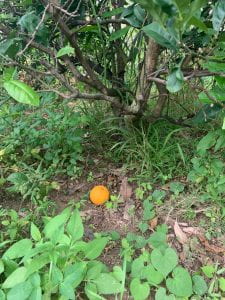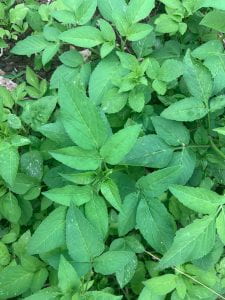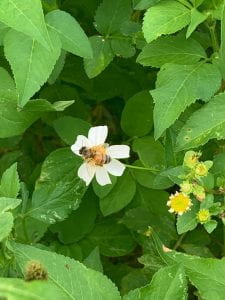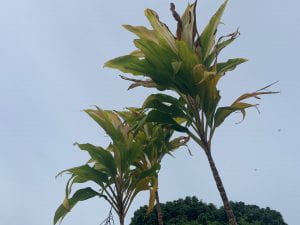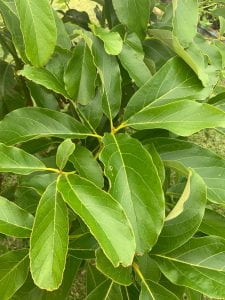March 31, 2020
For this “trip”, I was restricted to my backyard, which luckily has a plethora of plants, including trees and shrubs. The estimated elevation for my location is 16.4 feet.
I have a flat, relatively small backyard, which consists mostly of open grass, however we have a garden in the corner which has become overcrowded with a few small trees and potted plants. The day I decided to complete this was a very sunny, warm day with little wind.
Signs of Spring are hard to find in Hawai’i, since we really only have two seasons: Summer (May to October) and Winter (November to April). However, there are signs that tell us summer is coming soon, which are comparable to signs of spring in other places.
- The first sign of spring that had been apparent all week was the sun. While it is sunny year round in Hawai’i, we typically have a few weeks of cloudy, rainy weather. While still warm, that is a tell of winter. Prior to me coming home, I listened to constant complaints from my friends still here about how they missed the sun. Consistent sun throughout last week and this week is a sign that we have hit spring, and summer was coming soon.
- Another sign of spring is the abundance of cane toads that arrive in my backyard. Cane toads are year round, but they tend to come out more in spring, and stay until the end of summer when it is the warmest. A sign of spring is the sounds of the toads outside at night, as they tend to create a long, humming sound. They gather more frequently during spring and summer since that is their typical breeding time during the year.
- The third sign of spring is the change in ocean behavior. In winter, the waves are typically bigger and more rough, especially on the northern part of Oahu. The cooler air and higher winds in winter results in more wind energy to the water, causing bigger waves. One tell that spring is here is the smaller waves, particularly at Waimea Bay.
I was also able to observe the leaves of many plants while in my backyard.
- Orange (Citrus x aurantium)
- The leaves on my orange tree were rather small, and did not really have any sharp edges. The leaves were elliptic shape and shiny, and none were longer than two inches. They were also bunched together around the fruit bud.
-
- The second picture is a single orange on the ground from the tree. There were no other oranges so I found this kind of odd.
- Black-Jack (Bidens pilosa)
- The leaves from this tree were also fairly small, and had an acute shape where they were wide and narrowed for a pointed tip. They had serrated edges, and were dull unlike the orange tree leaves.
- Ti (Cordyline fruticosa)
- Ti leaves are very long and linear, and lack a firm structure. They have a thick petiole that runs through the middle, but the blade is very flimsy and soft. The leaves are also shiny and smooth to the touch.
- Avocado (Persea americana)
- The leaves of the avocado tree are relatively long, as firm in comparison to the ti leaves. They have an elliptic shape, similar to the orange leaves but much larger. They are also very smooth, and fold slightly inwards.

